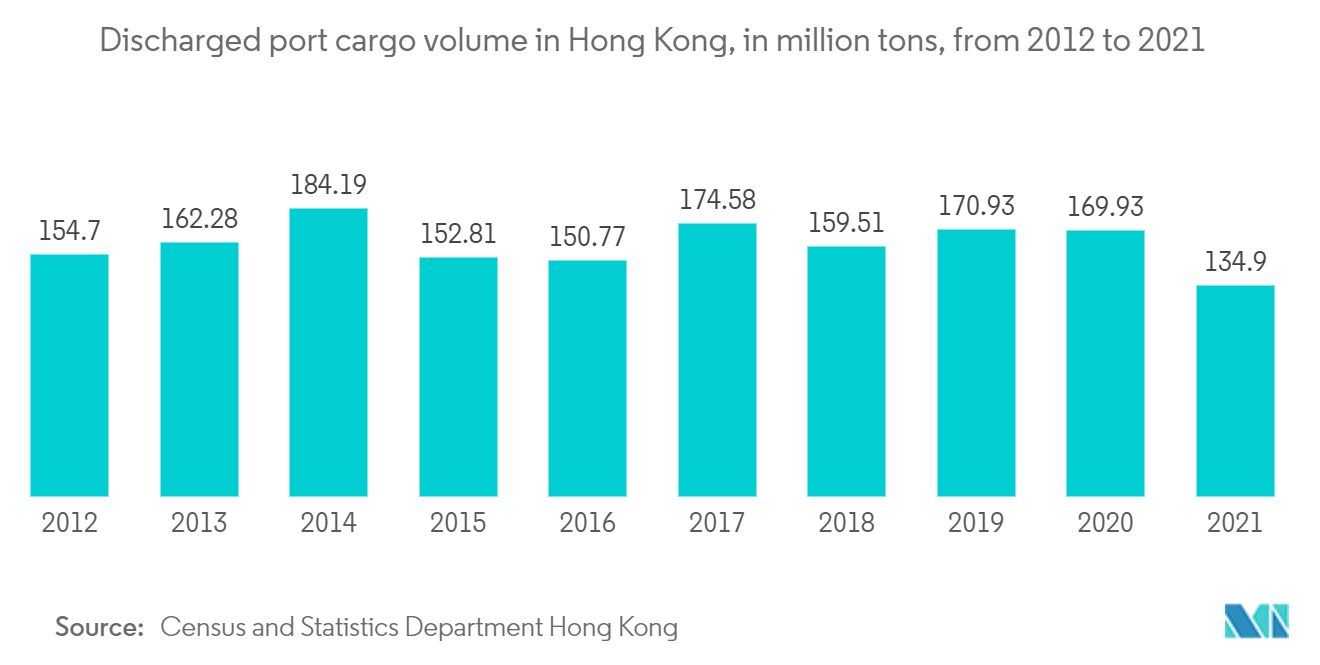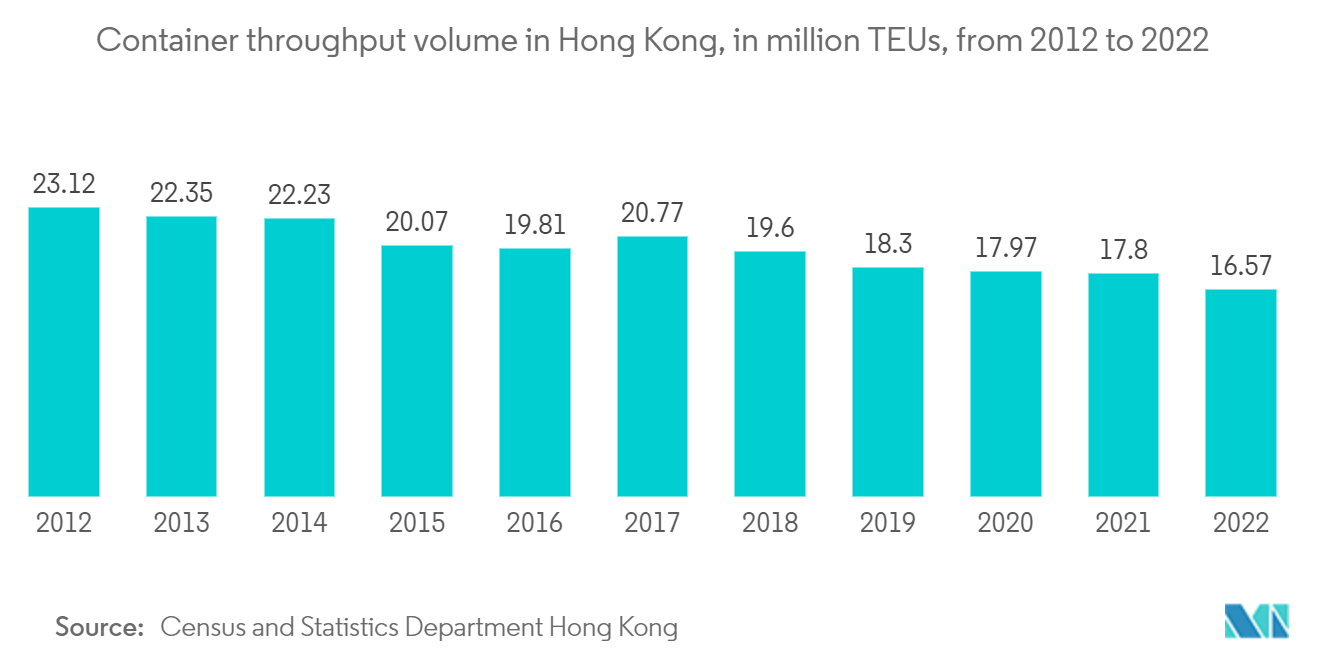Market Trends of Hong Kong Stevedoring and Marine Cargo Handling Industry
This section covers the major market trends shaping the Hong Kong Stevedoring & Marine Cargo Handling Market according to our research experts:
Increasing Sea Freight Driving the Market
With one of the largest shipping populations in the world and a thriving maritime cluster that provides a full spectrum of high-quality maritime services, Hong Kong has made a name for itself as a prominent international maritime center. It benefits from a port infrastructure that is developed and well-located. Furthermore, it is a prominent center for global trade with lots of transportation involved in logistics. The ship registration system used by Hong Kong Shipping Register (HKSR) is distinct from that used by Mainland China. Hong Kong was the world's 6th largest trading economy in 2021 with international trade immensely facilitated by its efficient port amid a strong presence of ship owners, cargo owners, and traders. Over the years, Hong Kong has seen a continual expansion of its maritime services cluster, comprising ship management, ship broking, ship finance, maritime insurance, and law.
As of the end of 2021, Hong Kong is the world's fourth-largest shipping register following Panama, Liberia, and the Marshall Islands. Hong Kong Shipping Registry reported registered vessels totaling 128 million gross tonnes (GT) as of September 2022. Hong Kong's port was ranked the ninth busiest container port in the world in 2021, trailing Shanghai, Singapore, Ningbo-Zhoushan, Shenzhen, Guangzhou, Qingdao, Busan and Tianjin.
The government's measures are assisting the maritime logistics companies. For instance, the Hong Kong government has double taxation agreements (DTAs) with numerous nations, including the United States, the United Kingdom, the Netherlands, Denmark, Norway, and Germany. Due to its low tax structure, solid institutional framework, and a cluster of maritime services, Hong Kong is regarded as the top option for foreign ship owners.

Technological Advancements in the Maritime Transportation Sector
In order to address recurring management issues and boost productivity, the maritime industry is embracing new technologies. Remote-controlled rubber-tired gantry cranes (RTGCs) and an automated container stacking system were introduced by HIT, the first container terminal operator in Hong Kong. The 29 cranes at Kwai Tsing Port each have monitoring cameras and sensors installed to assure complete precision, improving operational safety and efficiency. The largest port in Europe, the Port of Rotterdam, is also testing innovative approaches to streamline operations by utilizing autonomous vehicles. In order to provide a smoother traffic flow, truck platooning, which involves a group of automated trucks traveling closely behind a lead vehicle, is now being tested.
The development of smart ports has recently received strong support from mainland China. For instance, the Mawan Port in Shekou, Shenzhen, finished its renovation and transformation process in November of last year, incorporating blockchain, artificial intelligence, smart port, and green and low-carbon upgrades, making it the GBA's first 5G-enabled smart port. Another significant milestone was the completion of Phase IV of the automated terminal at Nansha Port, making it the first of its kind to operate in the GBA. Newer IoT sensors, 5G networking, and a variety of AI-enabled resources are a few of the terminal's enhanced features. The update has also made it possible to use fully automated container cranes and intelligently guided vehicles on-site.


